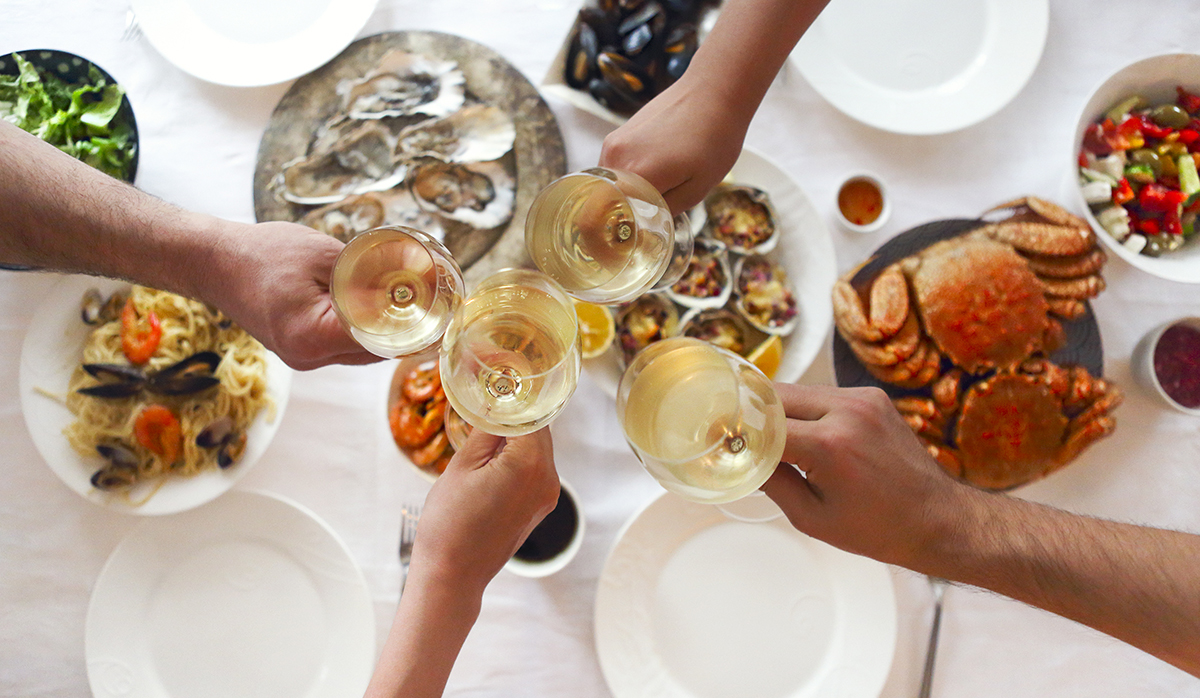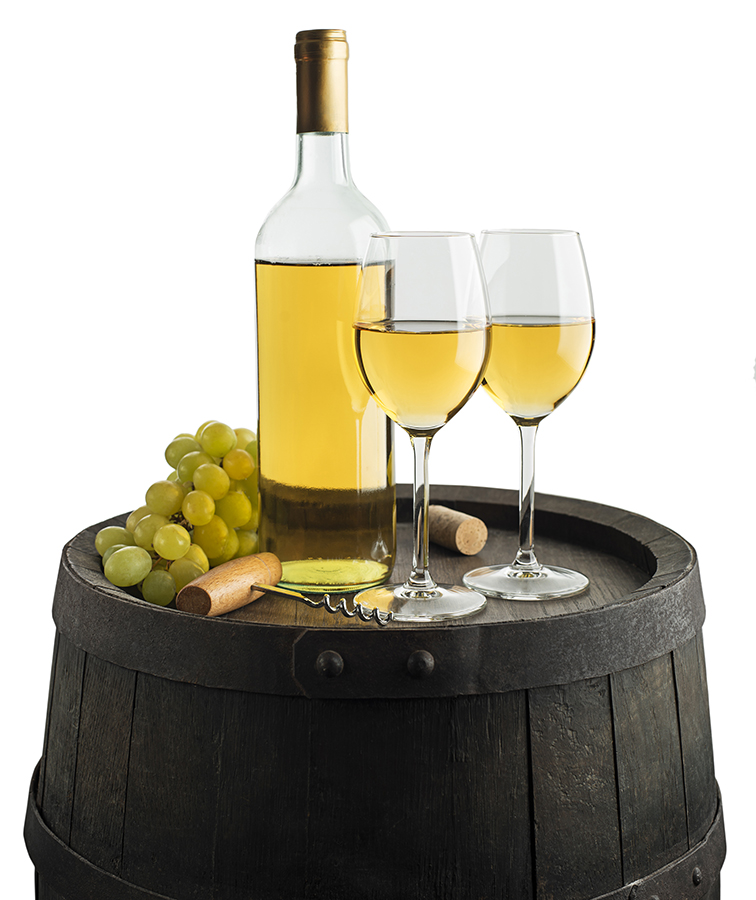 Quite often, these guests are themselves used to being wined and dined all over the country, if not the world.
Quite often, these guests are themselves used to being wined and dined all over the country, if not the world.
So why is it, that with a prestigious wine list of over seven-hundred carefully curated selections, do sixty percent of these guests flip straight to the Napa Cabernet section looking for that one prestige label they recognize?
I realize the answer is obvious, but with all due respect to the world-class California wine region that fostered my career, having a little broader knowledge (and a good sommelier), there are many stellar varieties outside of the famous Napa Reds that can really get the attention of those clients, dates or family members.
So here’s where I can help… Nobody expects you to give the sommelier a run for his/her money when it comes to matching food to wine, or even knowing the particulars about producers from say, a random region in Austria; but, I can get you up to speed on several amazing options and the right questions to ask.
Everyone has different tastes and experiences when it comes to food and wine. But just like you wouldn’t order steak as an appetizer, mid-course, entrée, and dessert, why order the same wine for every course or even every meal? Consider pairing wines to the various courses. There are as many types of wine as there are types of food, and my
advice is to be adventurous and explore.
Right off the bat, if you start drinking a huge, tannic wine at the beginning of the meal, your palette is going to be so fatigued, that you won’t make it past the salad course. A nicer option is to start with a little Blanc de Blanc Champagne (100% white grapes) that is high acid and pairs with almost every light starter. If you’re so inclined, you could even get a fuller-bodied Blanc de Noir Champagne (white juice from 100% red grapes) that can stand up to heavier dishes anywhere in the meal.
High acid white wines from cooler growing regions pair well with salads, vegetables, or shellfish dishes without losing the nuances of light flavors.
Chablis, a fine example of chardonnay sourced from the chalky, fossilized Kimmeridgian clay and limestone soils of Burgundy is the perfect way to match any oyster dish. Seven Grand Cru Chablis houses and some forty Premier cru vineyards provide a wide range of prestigious options.
 Muscadet from the west coast of the Loire in France is also an incredibly natural match for oysters, with its dry, simple, briny coastal influences.
Muscadet from the west coast of the Loire in France is also an incredibly natural match for oysters, with its dry, simple, briny coastal influences.
Increasingly popular is Sancerre which is Sauvignon Blanc from similar soil composition in the Central Vineyards of the Loire Valley. These wines tend to be a bit lighter with noticeable green pepper notes and pair beautifully with seafood dishes.
For something very versatile; German, French or Austrian Rieslings run the gamut from completely dry to syrupy-sweet and can dance with sushi and shellfish dishes alike. They can satisfy a range of tastes accommodating for the preference of spice level and sweetness.
Vegetables are usually the hardest to pair, but another fine variety to try with these is a Gruner-Veltliner from the Austrian Wachau region. The floral aromas, hints of white pepper, and green bean will be a fun complement to salads and vegetable-based dishes.
If you’re looking for something more substantial and full-flavored, (à la Russian River chardonnay), there are plenty of options that will blow you away in that category.
Quite often, I have clients who are looking for a wine to match with a meat dish that has fat content or a flavorful sauce but aren’t keen on the drying, tactile effect that comes from the tannin in red wines. A safe way to get a different perspective on Chardonnay is a white Burgundy. This classic region is arguably one of the most diverse. But you may ask, “isn’t chardonnay just buttery and oaky like Rombauer?” Actually, no; Chardonnay is a chameleon variety. It really expresses whatever it’s exposed to (terroir, oak, etc.), so winemakers love that it’s a beautiful blank palette with which to work.
Of the dozens of varieties, try a Meursault, Chassagne-Montrachet or St. Aubin for a familiar, yet surprising expression of the variety that’ll impress even the most skeptical Sonoma chardonnay lover.
Another option for those looking to find a white wine to stand up to a rich, meaty dish, is white Rioja. (No, Rioja is NOT a grape.) As in most European (old world) regions, laws require specific varieties to be produced in designated areas. In the famous Rioja region of northeast Spain, bordering the Basque region and Southwestern France, the white wines are primarily made with the indigenous Viura grape. The wine style here is marked with oxidative character, coming from a moderately warm climate and a propensity to use American oak barrels from the Appalachians. This choice differs from the use of French oak, in a few ways. The grain pattern and porous nature of new American oak impart flavors such as coconut and dill and tend to create a creamy texture. New French oak, on the other hand, leans toward vanilla and baking spices while leaving a silkier structure. French oak barrels are also quite a bit more expensive, often double the cost of American oak. This last difference is usually reflected in the price of the finished wine, making Rioja one of the more value-based, world-class wines.
For less acidic, flavorful and aromatic styles, try an incredibly aromatic Viognier from the Northern Rhone village of Condrieu, or a stonefruit-driven Gewürztraminer from the sunny, Alsace region in eastern France.
If you love spicy food like I do, believe it or not, there’s a wine match for that too. Don’t be afraid of a little sweetness to offset and enhance spicy flavors. German Riesling from the Mosel Valley near the French border is made in the classic off-dry style. These wines are also great for those who aren’t frequent drinkers as the alcohol level is typically far less than what you would find with most standard wines. An alcohol level of 8-11% is common in German Riesling.
A great semi-sweet option is Vouvray. These wines from the region of Touraine in the central Loire Valley of France are made with Chenin blanc in a sec (dry), demi-sec (off-dry), moelleux (honeyed) and liquoreux (dessert) style. Typically, a bit more floral than Riesling, Vouvray is a fantastic pairing for savory cheeses, as well. Due to the structure and balance that these wines have, they can age beautifully and express in an entirely different manner over time.
Towards the end of the dining experience, don’t forget the dessert wine! Sherry from Jerez in Southern Spain is my go-to, but you may love the more honeyed Sauternes from southern Bordeaux.
While this seems to be an overwhelming amount of information, it’s barely the tip of the Iceberg. It is amazing that the more I learn, the humbler I feel I become in my craft. I truly hope it helps everyone diversify and enhance their experience when visiting a new restaurant or culture anywhere in the vast world of wine. My goal is to open the gates to a real, sensory art form that is accessible from places you may have been twenty times in your city, to those you may not even know exist, thousands of miles away.
If all else fails, and you still can’t decipher the code that is the wine list… don’t forget to trust the pin… being able to guide folks to great wine experiences is the payoff for all the Sommelier’s hard work.
My joy comes from making a fan out of someone who never knew this door to the beautiful world of wine ever existed. Cheers.

By Tony Schlotzhauer
OTL Wine Editor